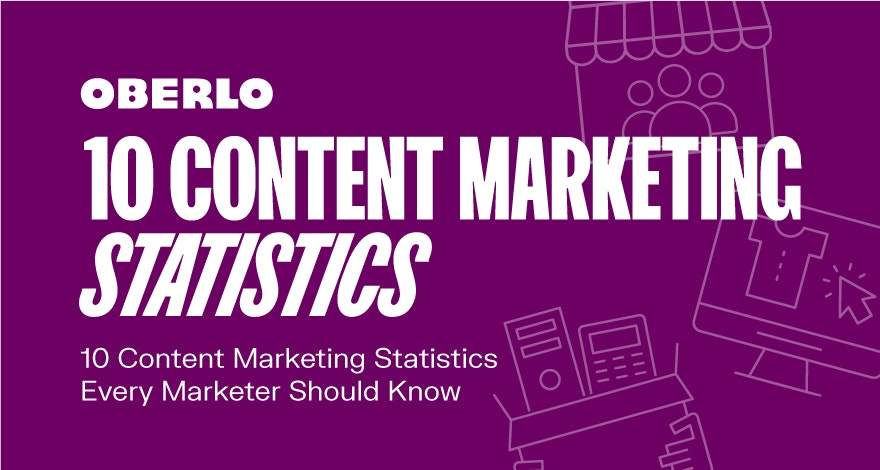You’ve got your ecommerce store all set up and you’re ready to launch. Once it goes live, the key lies in getting consumers to visit your store.
The fundamental question here is: How?
To quote Bill Gates, “Content is king.”
One of the most effective ways to increase website traffic is with content marketing. Doing it right requires, first and foremost, understanding aspects of it like what sort of goals to set, what metrics to look at when measuring content marketing’s effectiveness, and more.
In this article, we’ll dive into ten content marketing statistics that will show you not only the importance of content marketing but also some of its best practices so you know just how to craft the content marketing strategy that best suits your business.
Let’s get started.
Post Contents
- 1. Content Marketing Effectiveness
- 2. Measuring Content Marketing
- 3. Most Achieved Content Marketing Goal
- 4. Active Investment in Content Marketing
- 5. Content Marketing Budget
- 6. Content Marketing Strategy
- 7. Consumers Expect Brands to Provide Content
- 8. User-Generated Content Is Important
- 9. Content Marketing Strategy: Paid Distribution Channels
- 10. Outsourcing Content Marketing
- Conclusion
- Summary: Content Marketing Statistics
- Want to Learn More?



1. Content Marketing Effectiveness
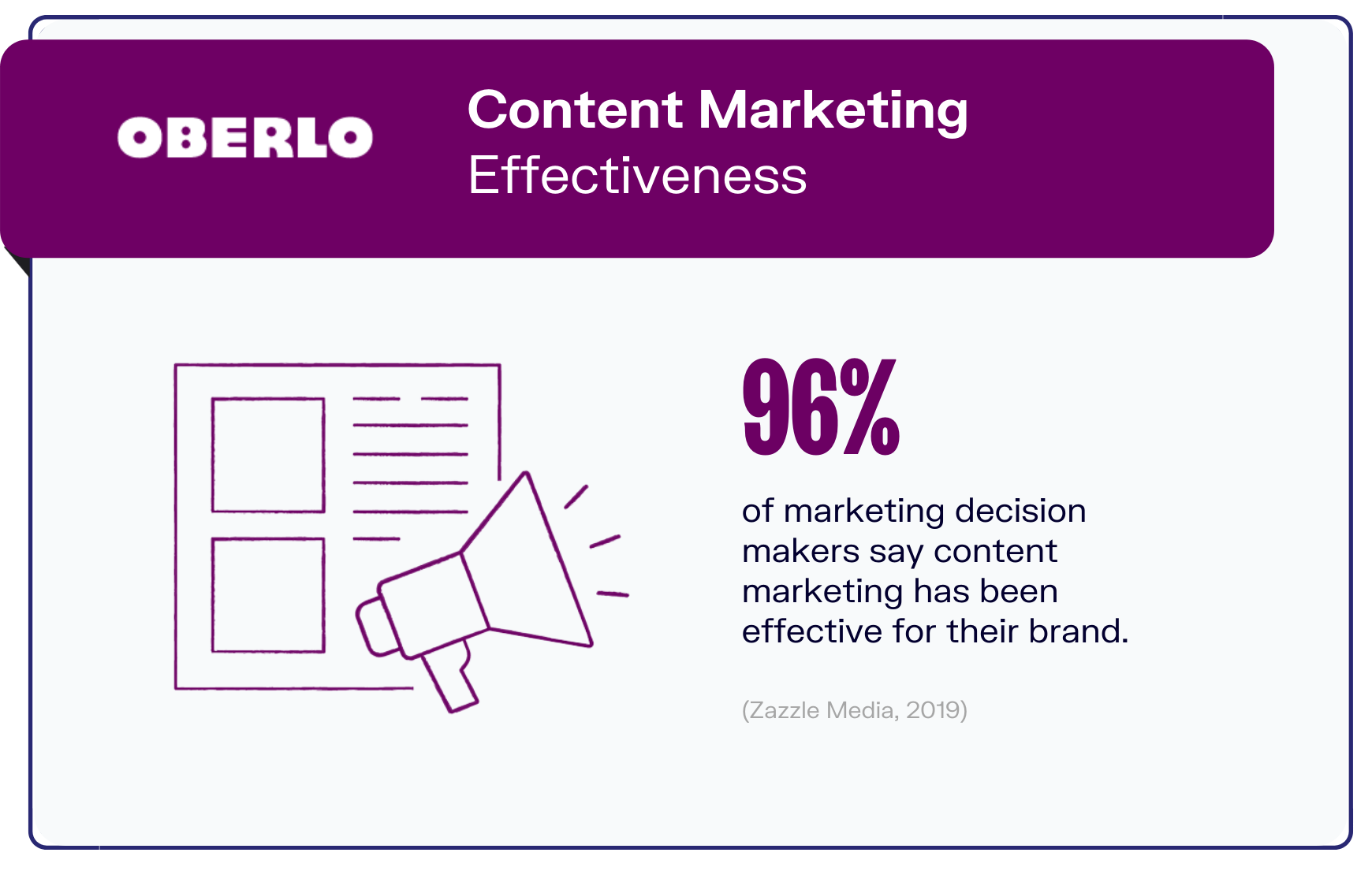
The first content marketing statistic we have for you will aim to answer the basic question, “Why is content marketing important?”
→ Click Here to Launch Your Online Business with Shopify
The best way to explain the importance of content marketing is to look at its success rate. As many as 96 percent of all marketing decision-makers today say content marketing has been effective for their brand (Zazzle Media, 2019). That’s an increase of 37 percentage points increase from the 70 percent who said so in 2017.
In fact, nearly one in five of them describes content marketing as “extremely effective.”
This is so much so that content marketing is increasingly being integrated into brands’ overall business goals, with 89 percent of marketers saying that it now forms part of their company’s wider objectives.
When it comes to the types of content marketing that are commonly used, written content is still by far marketers’ favorite. A whopping 98 percent of marketers use written content as part of their content marketing strategy. This is followed by email marketing with 82 percent and organic social with 78 percent.
2. Measuring Content Marketing
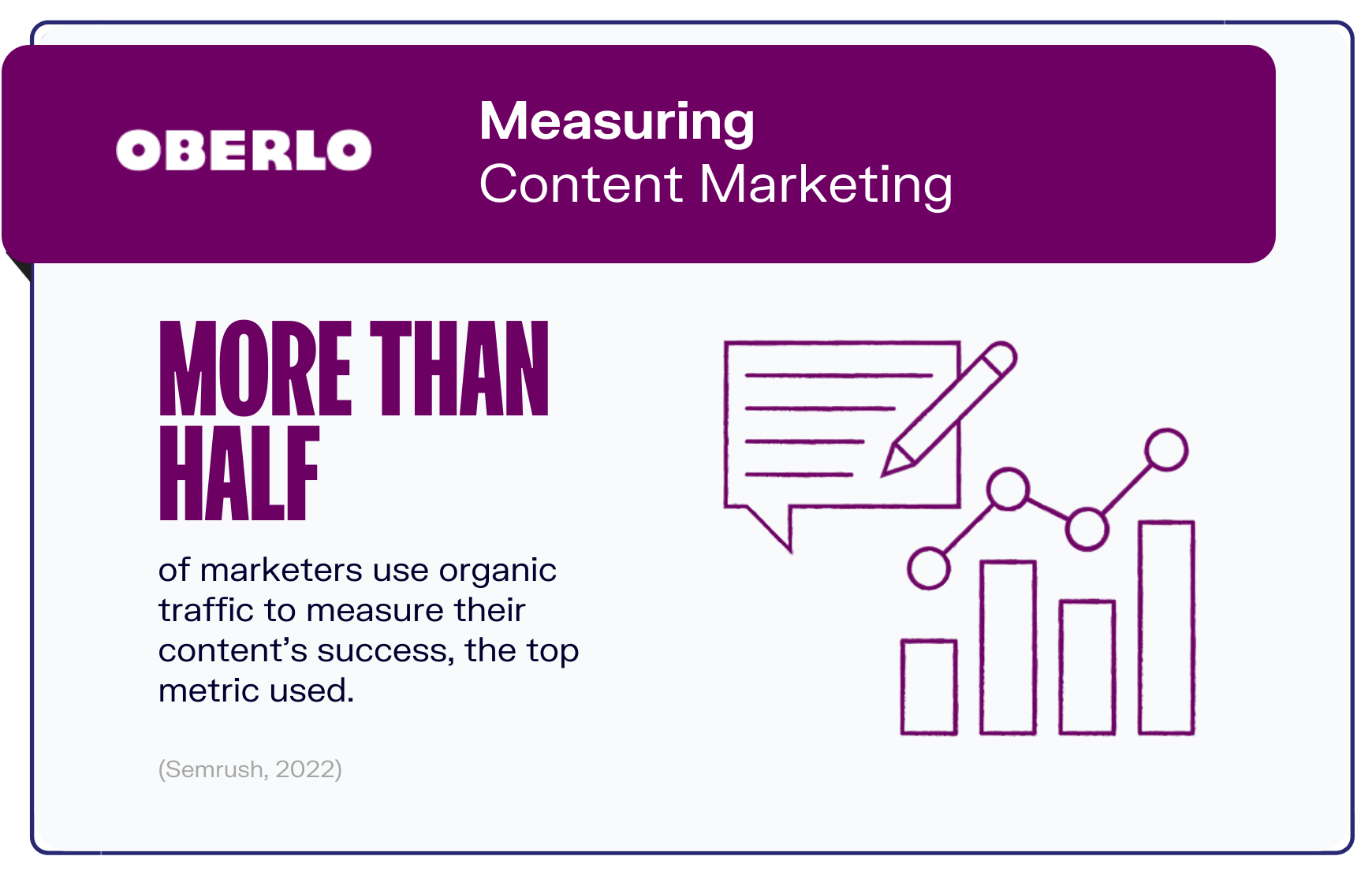
Though the above statistic proves that content marketing is effective, it doesn’t mean you should start churning out content after content with no overview of its results. There needs to be a strategy in place, and a big part of that is success measurement.
The latest content marketing statistics show that more than half of all marketers (51 percent) use organic traffic to measure their content’s success (Semrush, 2022). This refers to users arriving at a website through non-paid means after having come across content by conducting an online search.
This is the most popular way of measuring content marketing success, followed by search ranking, with 42 percent of marketers listing it as a metric to measure how well their content has performed. Leads, conversion rates, and social shares make up the five most popular metrics with 40 percent, 34 percent, and 32 percent respectively.
3. Most Achieved Content Marketing Goal
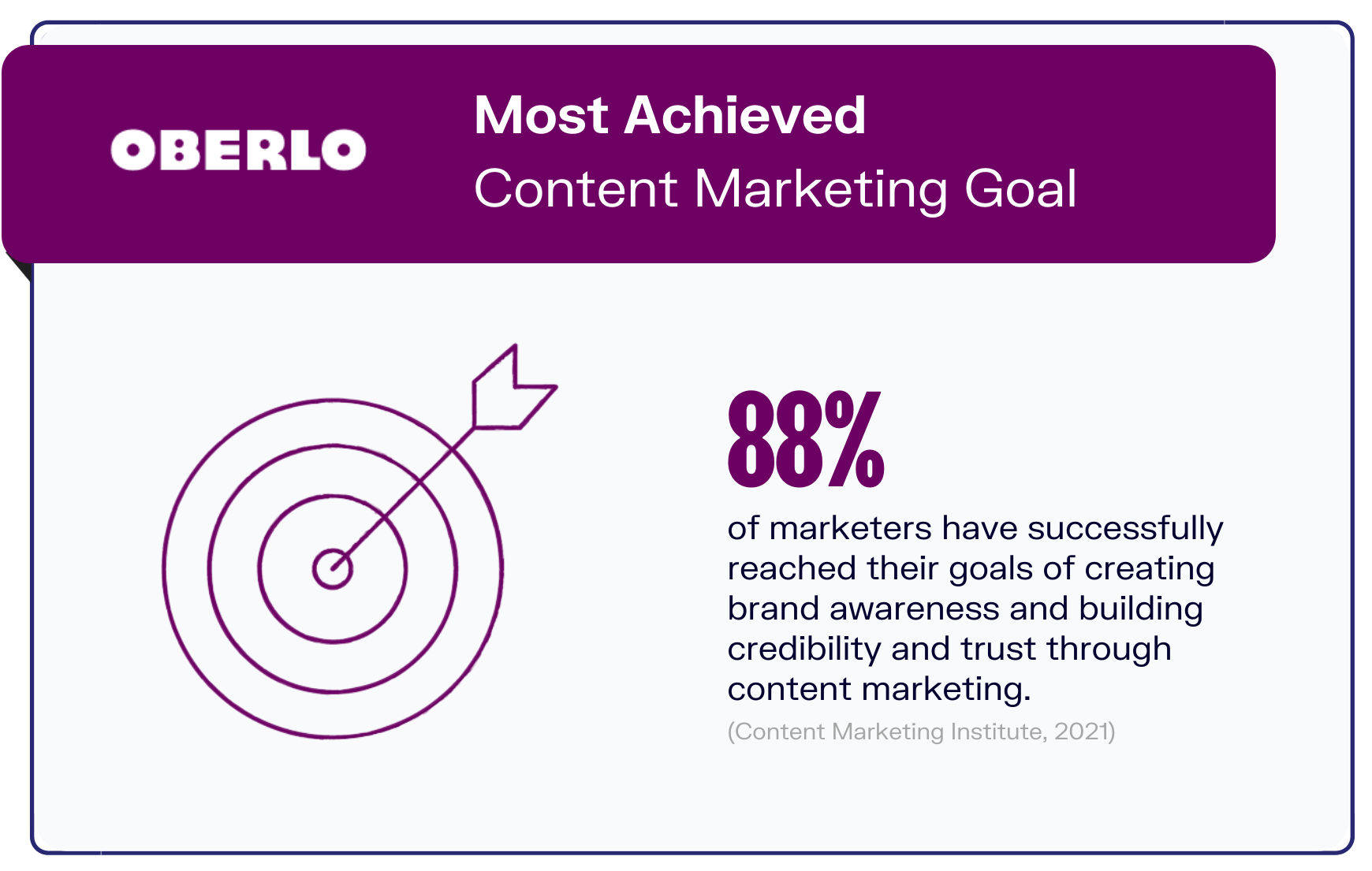
No content marketing strategy is complete without setting goals and objectives.
According to a recent survey, 88 percent of marketers have successfully reached their goals of creating brand awareness and building credibility and trust through content marketing (Content Marketing Institute, 2021).
These make them the most achieved goals through content marketing. Other goals marketers have reached with the use of content include the ability to educate their audiences, with 80 percent of marketers having achieved it, followed by building loyalty with existing clients (78 percent), and generating demand and leads (72 percent).
With the increasing number of marketers reporting successful goal attainments for these metrics, it’s clear that content marketing is an essential strategy to grow your dropshipping business.
4. Active Investment in Content Marketing
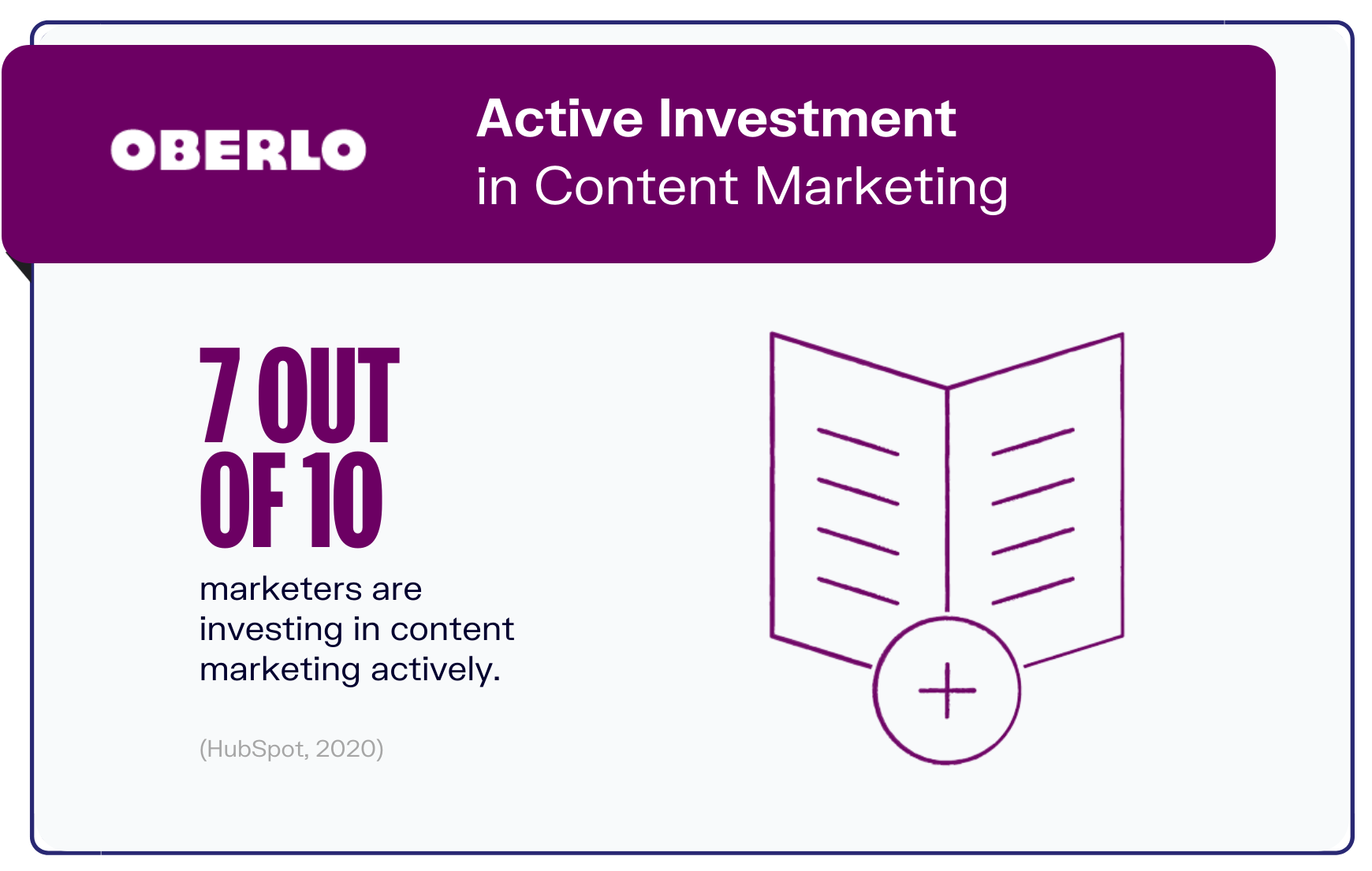
With such a high rate of success with goal attainment through content marketing, it should come as no surprise that as many as 70 percent of marketers are investing in content marketing actively (HubSpot, 2020).
But not all types of content marketing are made equally, and costs can vary across the different methods. Video marketing, for instance, can be particularly expensive, especially if it is done with proper professional equipment and quality footage and editing.
The costs of influencer marketing can also fluctuate quite a bit depending on the industry or niche you’re in and the type of influencers you’re going for—whether it’s a high-profile influencer or a micro-influencer.
The amount of time, energy, and resources that you can spend on investing in content marketing will ultimately come down to your content marketing budget, which brings me to my next point.
5. Content Marketing Budget
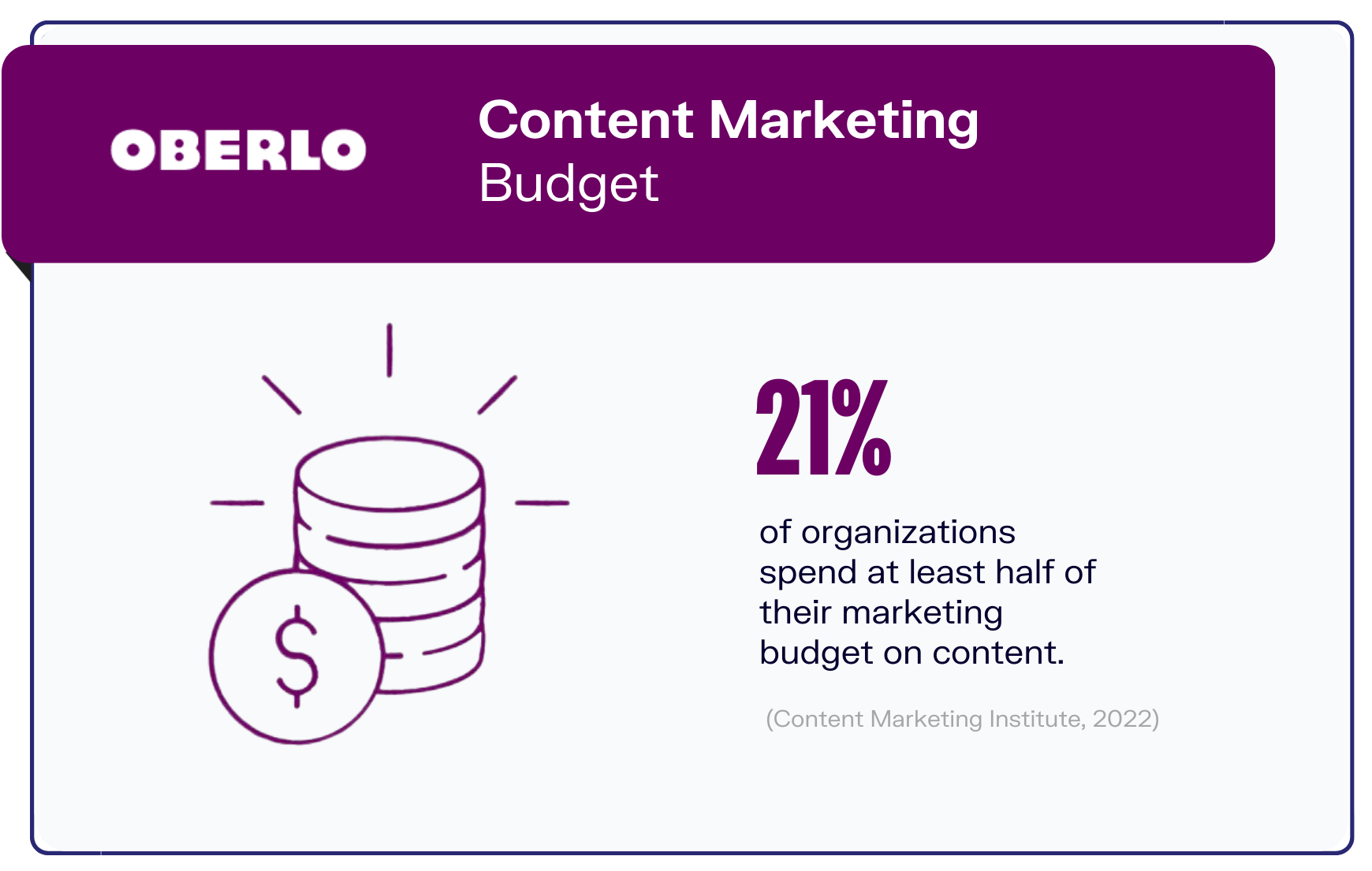
Yes, content marketing is effective. But just what proportion of the total marketing budget is spent on marketing?
According to the latest content marketing statistics, more than two out of five marketers (21 percent) say they spend at least half of their team’s budget on content (Content Marketing Institute, 2022).
In fact, up to one in three (33 percent) of those who’s had success with content say more than half of their total marketing budget is allocated to content. In comparison, just eight percent whose content efforts have not been effective allocate that much.
A separate study on the breakdown of brands’ content marketing budgets shows that 27 percent of teams spend a maximum of $1,000 a month on content. 19 percent have a budget of between $1,000 and $3,000, and another 20 percent allot $3,000 to $5,000 to their content marketing efforts. In other words, around two in three businesses spend up to $5,000 a month on content.
6. Content Marketing Strategy
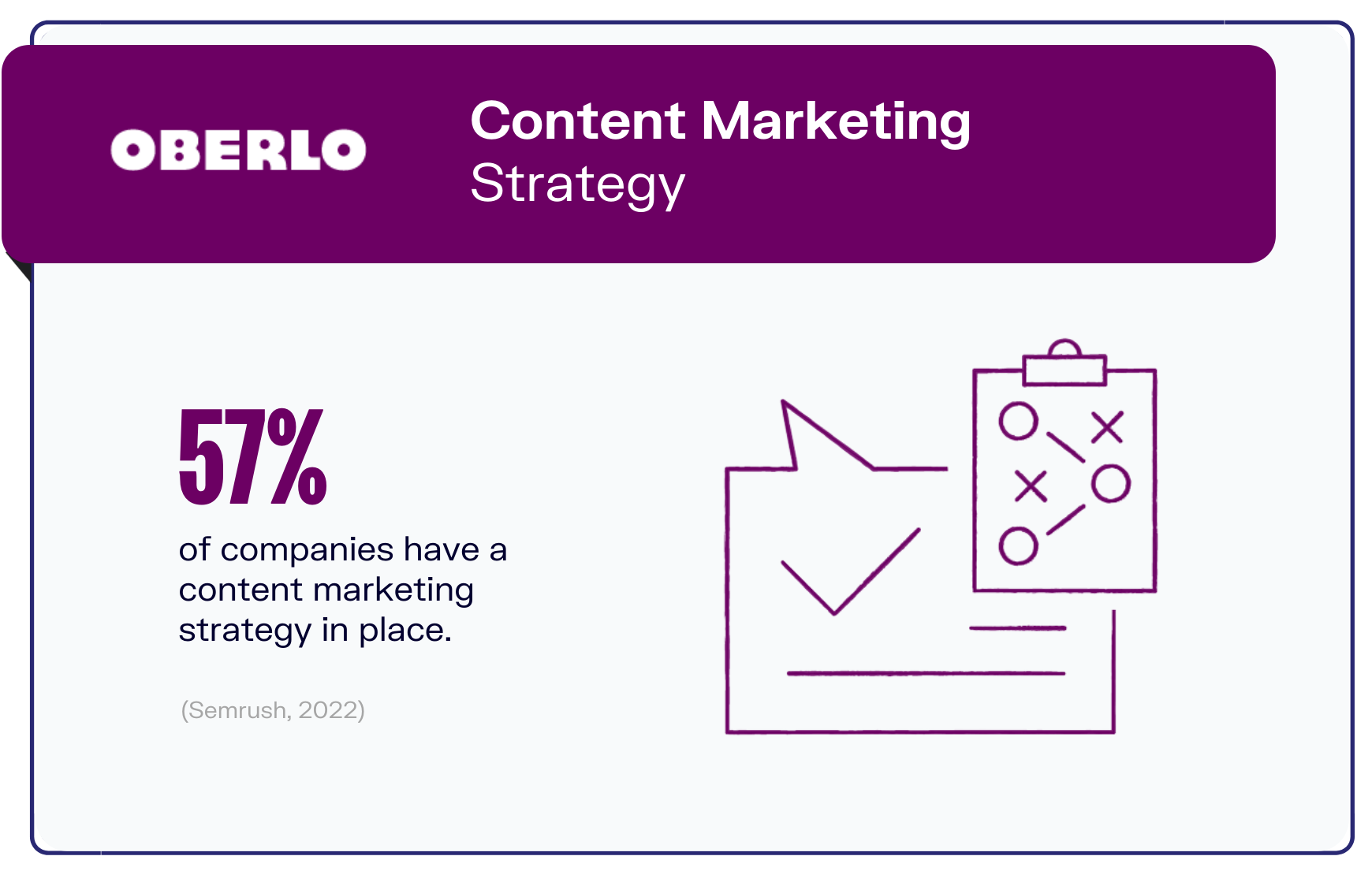
Investing in content marketing is one thing, having a proper strategy for it to ensure business goals are met is another.
As we’ve seen from the previous content marketing stats, brands are dedicating resources to achieving their business goals through content marketing. However, not all of them have a strategy to guide them.
The latest figures show that just under six in ten (57 percent) companies say they have a documented content marketing strategy in place (Semrush, 2022).
Of them, a majority, or 39 percent of them, consider their strategy to be “somewhat successful,” while 33 percent say it’s “moderately successful.” 19 percent of them say their strategy has been “very” successful. However, nine percent say it’s been “unsuccessful.”
Crafting a successful content marketing strategy that works and meets your business objectives isn’t a straightforward process. It involves constant evaluation and fine-tuning to adapt to the ever-changing needs of the market, your audience, and your business goals.
7. Consumers Expect Brands to Provide Content
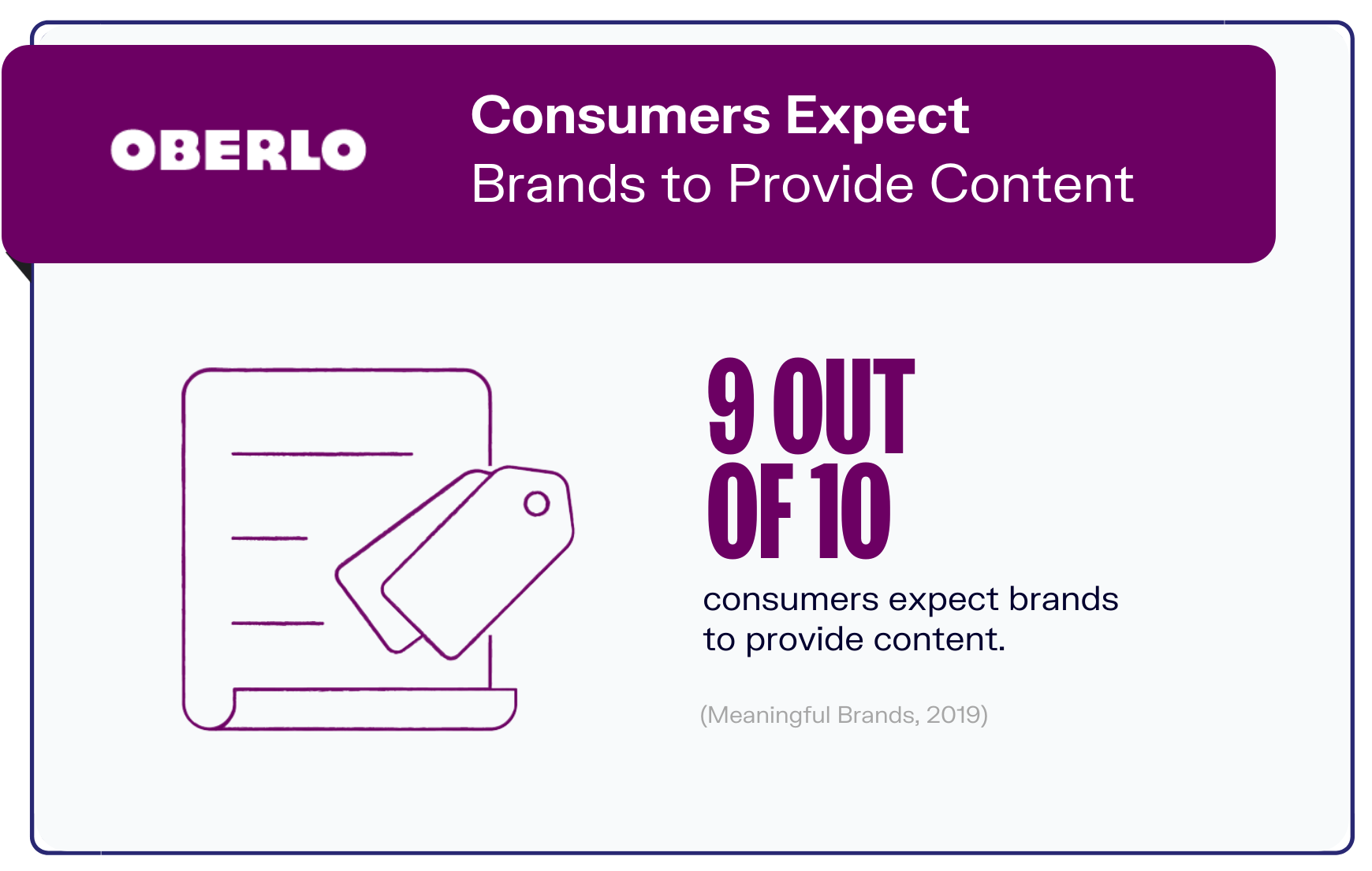
Interestingly, 90 percent of consumers expect brands to provide content (Meaningful Brands, 2019). But while the demand is clearly there, getting your content to really resonate with consumers may prove challenging because more than half (58 percent) of online content is not considered to be meaningful.
Content marketing is certainly a competitive field. In order to get your content to stand out, you need to differentiate it from the content published by other brands and more importantly, your competitors.
This is done by what expert Rand Fishkin calls “10x content”. Factors that need to be considered in crafting such content include whether it generates an emotional response, is unique, and includes exceptional information.
As a matter of fact, a lot of what this essentially boils down to is the angle of your content and your ability to provide readers with a content experience that’s different from everything else that’s already been published.
8. User-Generated Content Is Important
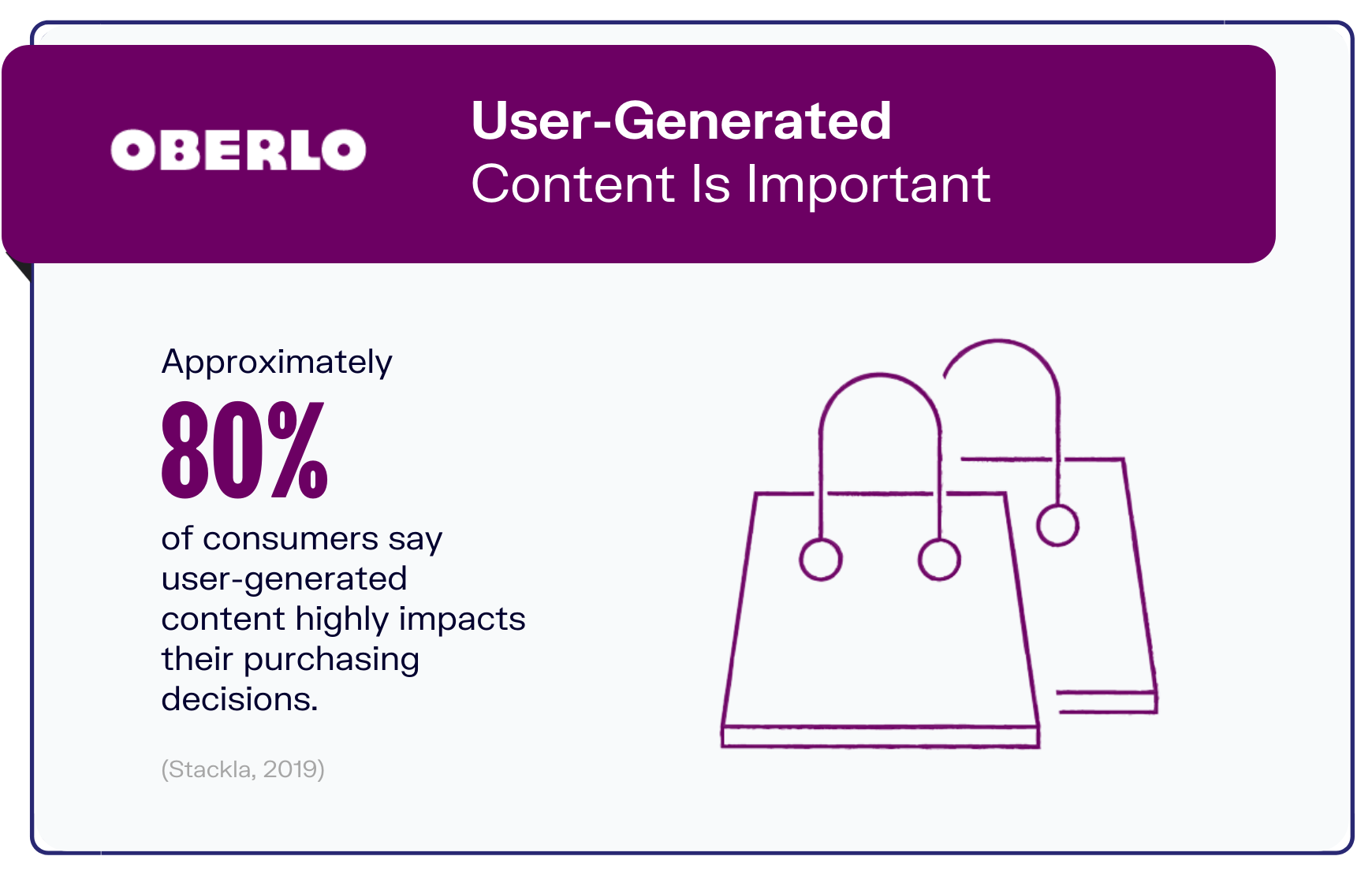
One type of content that comes across as meaningful and valuable is user-generated content. It is one of the most effective forms of content marketing, with as many as 79 percent of people saying that it highly impacts their purchasing decisions (Stackla, 2019).
In contrast, just 13 percent of them say branded content affects their decisions in the same manner, and the figure falls further to eight percent for content created by influencers.
It can be argued that much of this comes down to the difference in perception of how authentic these types of content are.
Compared to branded content, consumers are 2.4 times more likely to view user-generated content as authentic. In fact, this is a stark contrast with marketers’ own perspectives, who are two times more likely to view branded content as the more authentic one.
9. Content Marketing Strategy: Paid Distribution Channels
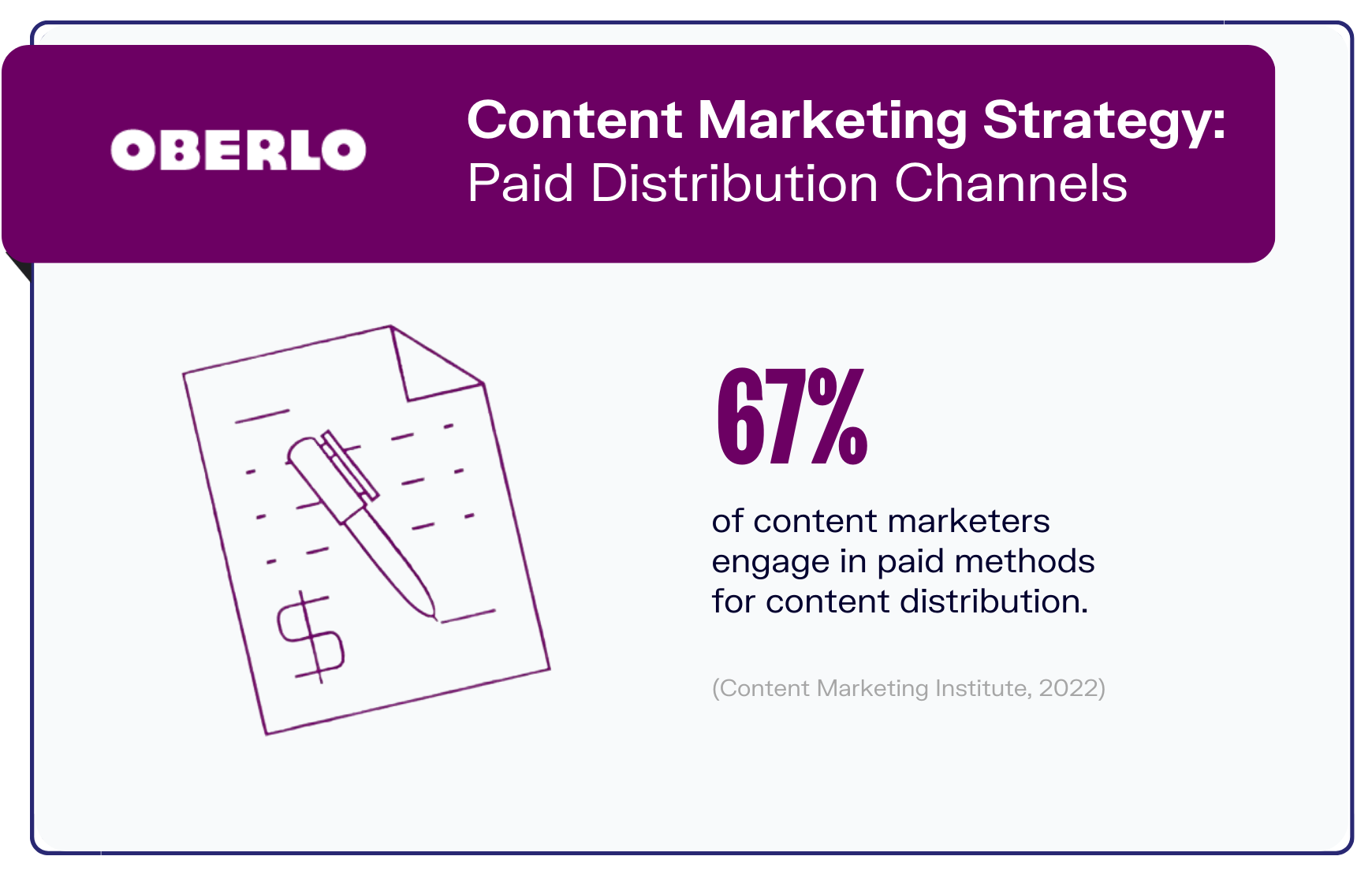
The latest content marketing statistics show that non-organic methods are also especially popular among marketers. As many as 67 percent of them have invested money in ways to promote and distribute their content (Content Marketing Institute, 2022).
Of all the different paid content marketing channels, social media is the most popular one used by marketers, with 66 percent (or two-thirds) of marketers using it. It should come as no surprise that social media ad spend in the US has been rising year after year and is set to hit $94 billion in 2023.
Paid search ads, which refer to ads placed on the results pages of search engines, are the second-most popular paid distribution channel among marketers. 45 percent of marketing teams use them in their strategies. This is followed by YouTube ads, with 40 percent, and display ads, with 32 percent.
10. Outsourcing Content Marketing
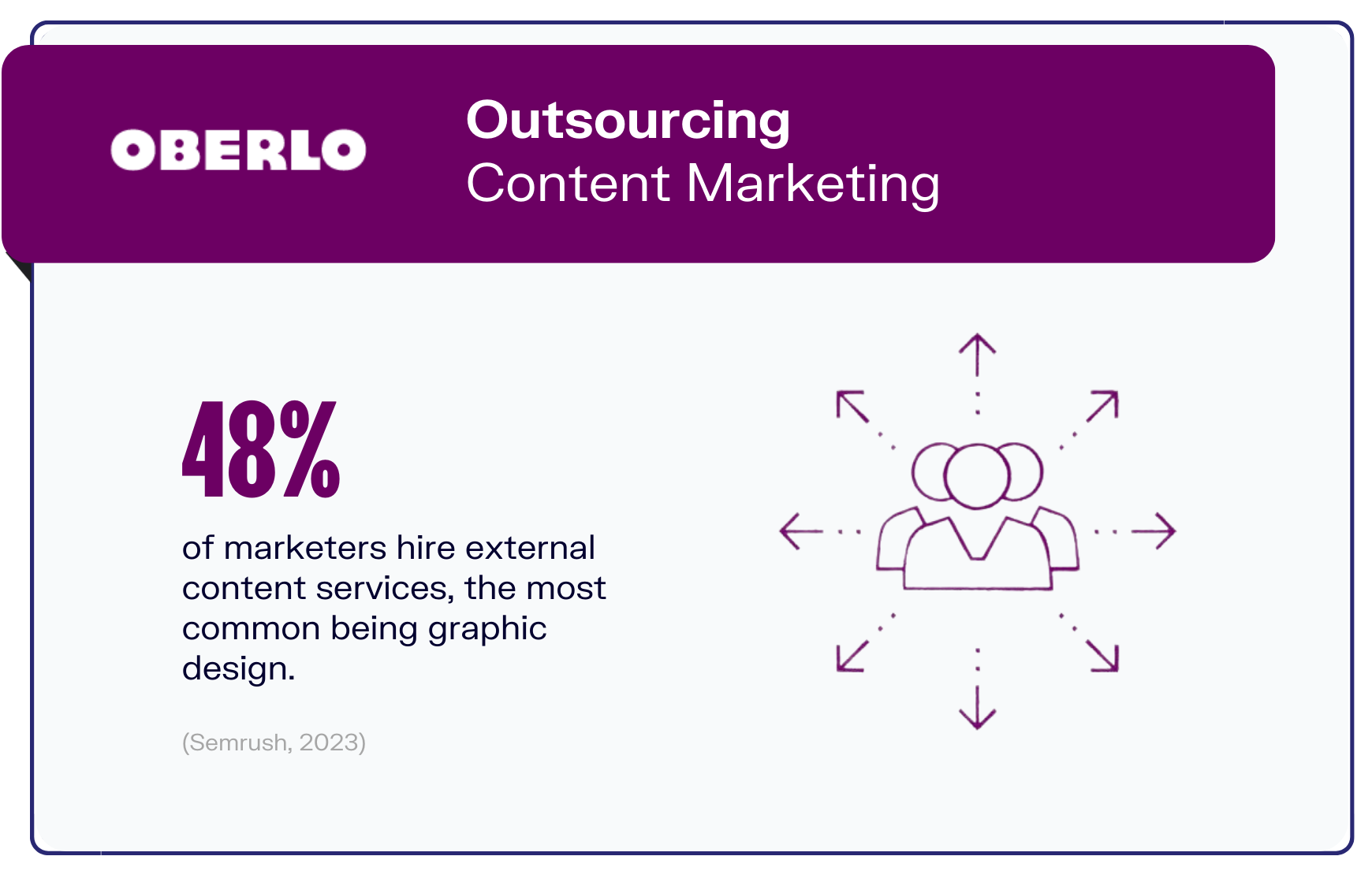
A lot of time, energy, and effort go into doing content marketing well. Not only does that rely on the team itself and its available resources, but it’s also about how well integrated it is into the company.
According to the latest content marketing statistics, just over one-third (36 percent) of organizations say they are served by a team of one to three specialists. In fact, for 42 percent of companies, there’s just one team or specialist that’s in charge of all content marketing efforts for the entire company.
If your business is just starting out, you’re going to be pretty busy managing its different aspects and you may not have the resources to hire a full-time content marketer. One way around this is to outsource the work. The best part about outsourcing content marketing is that from creation to strategy and measurement to distribution, there are just so many different tasks that external services can assist with.
And many companies certainly are. Nearly half of them (48 percent) say they hire external content services (Semrush, 2023). Graphic design is the most-outsourced aspect of content marketing, done by 47 percent of marketing teams. This is followed by video design or animation, with 43 percent, copywriting, with 37 percent, and editing or proofreading, at 31 percent.
Conclusion
We hope these content marketing statistics have provided you with a clearer idea of the importance of content marketing and how it can help your ecommerce business.
If you need more help with growing your business, head on over to our blog where we have plenty more insightful and articles about everything related to dropshipping.
For those of you who already have a content marketing strategy in place, do share with us what’s worked and what hasn’t in the comments section. We’d love to hear your thoughts!

Summary: Content Marketing Statistics
Here’s a summary of the Content Marketing statistics you need to know in 2023:
- 96 percent of marketing decision makers say content marketing has been effective for their brand.
- 51 percent of marketers use organic traffic to measure content marketing success, the top metric used.
- 88 percent of marketers have successfully reached their goals of creating brand awareness and building credibility and trust through content marketing.
- Seven out of ten marketers are investing in content marketing actively.
- 21 percent of organizations spend at least half of their marketing budget on content.
- 57 percent of companies have a content marketing strategy in place.
- Nine out of ten consumers expect brands to provide content.
- Approximately 80 percent of consumers say user-generated content highly impacts their purchasing decisions.
- 67 percent of content marketers engage in paid methods for content distribution.
- 48 percent of marketers hire external content services, the most common being graphic design.



Want to Learn More?
- Best Free Logo Maker: 17+ Tools and Apps for Logo Design
- The Modern-Day Guide on How to Start a Blog
- WooCommerce vs. Shopify: A Detailed Comparison
- 18 Best SEO Tools that SEO Experts Actually Use
Is there anything else you’d like to know about content marketing statistics and wish was included in this article? Let us know in the comments below!
